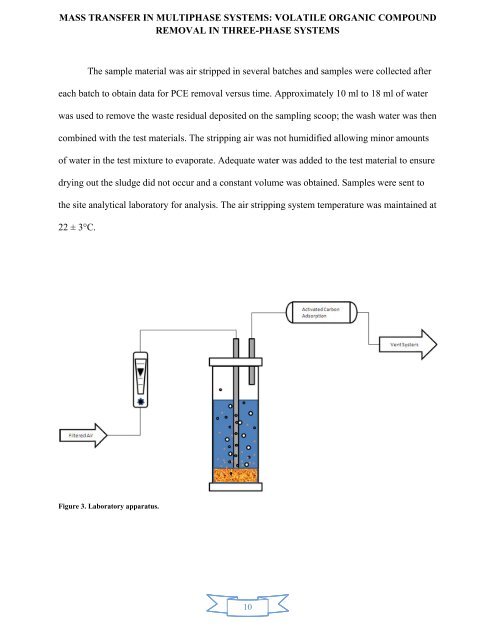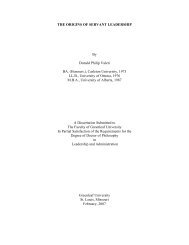mass transfer in multiphase systems - Greenleaf University
mass transfer in multiphase systems - Greenleaf University
mass transfer in multiphase systems - Greenleaf University
You also want an ePaper? Increase the reach of your titles
YUMPU automatically turns print PDFs into web optimized ePapers that Google loves.
MASS TRANSFER<br />
R IN MULTIPHASE SYSTEMS: VOLATILE<br />
ORGANIC<br />
COMPOUND<br />
REMOVAL IN THREE-PHASE SYSTEMS<br />
The sample material was air stripped <strong>in</strong> several batches and samples weree collected after<br />
each batch to obta<strong>in</strong> data for PCE<br />
removal versus time. Approximately 10 ml to 18 ml of water<br />
was used<br />
to remove the waste residual deposited on the sampl<strong>in</strong>g scoop; the wash water was<br />
then<br />
comb<strong>in</strong>ed<br />
with the test materials. The stripp<strong>in</strong>g air was not humidified allow<strong>in</strong>g m<strong>in</strong>or amounts<br />
of water <strong>in</strong> the test mixture to evaporate. Adequate waterr was added to the test material to ensure<br />
dry<strong>in</strong>g out the sludge<br />
did not occur and a constant volume was obta<strong>in</strong>ed. Samples were sent to<br />
the site analytical laboratory for analysis. The air stripp<strong>in</strong>g system temperature was ma<strong>in</strong>ta<strong>in</strong>ed at<br />
22 ± 3°C.<br />
Figure 3. Laboratory apparatus.<br />
10



